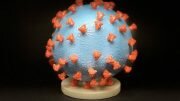In the latest weekly report of the National Institute of Public Health (FHI), the R-number in Oslo has been decreased from 1.5 to 1.3. That gives hope that the measures are starting to work, Line Vold at the FHI said.
In last week’s report, the R-number, i.e., the reproduction number that shows how many other people one infected person infects, was 1.5 since February 5.
However, this week’s weekly report showed that the figure had been 1.3 since February 22.
“It is too early to make conclusions, but we hope this is an indication that the measures are starting to work.
“We must follow the situation closely in the future. In general, we say that the measures should be in place for about two weeks before we can say whether they have a sufficient effect,” department director Line Vold at the FHI told Dagbladet.
High daily infection rates
However, the actual infection rates per day have been extremely high in the capital in recent days.
On Saturday, 397 new corona infection cases were registered in Oslo in the last 24 hours, 89 more than the same day one week ago.
“We follow developments on an ongoing basis, also in dialogue with national health authorities. As the situation is now, we do not envisage any relief in the measures in the near future,” Oslo’s Vice Mayor for Health Robert Steen (AP) said.
Source: © NTB Scanpix / #Norway Today / #NorwayTodayNews
Do you have a news tip for Norway Today? We want to hear it. Get in touch at [email protected]






Page summary:
In UK, Almost 95% of people aged 60 and over have been vaccinated. Why is the Norsk government so far behind ??????